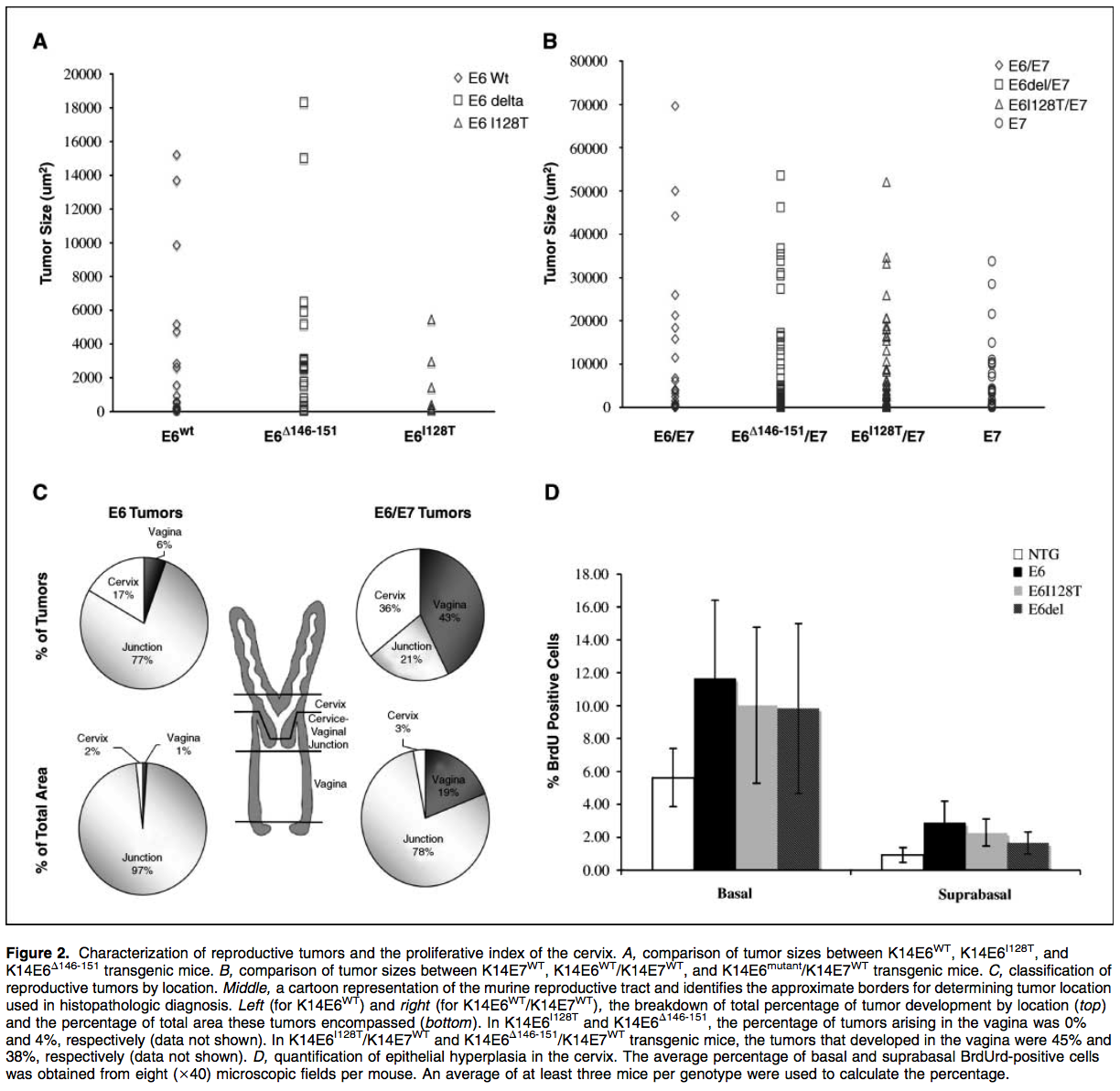
Anny Shai,1 Tiffany Brake,1 Chamorro Somoza,2 and Paul F. Lambert1
1McArdle Laboratory for Cancer Research, University of Wisconsin School of Medicine and Public Health, Madison, Wisconsin; and 2Arbor Vita Corporation, Fremont, California
Cervical cancer is a leading cause of death due to cancer among women worldwide. Using transgenic mice to dissect the contributions of the human papillomavirus (HPV) 16 E6 and E7 oncogenes in cervical cancer, E7 was identified previously to be the dominant oncogene. Specifically, when treated with exogenous estrogen for 6 months, E7 transgenic mice developed cancer throughout the reproductive tract, but E6 transgenic mice did not. E6 contributed to carcinogenesis of the reproductive tract, as E6/E7 double transgenic mice treated for 6 months with estrogen developed larger cancers than E7 transgenic mice. In the current study, we investigated whether the E6 oncogene alone could cooperate with estrogen to induce cervical cancer after an extended estrogen treat- ment period of 9 months. We found that the E6 oncogene synergizes with estrogen to induce cervical cancer after 9 months, indicating that E6 has a weaker but detectable oncogenic potential in the reproductive tract compared with the E7 oncogene. Using transgenic mice that express mutant forms of HPV16 E6, we determined that the interactions of E6 with cellular α-helix and PDZ partners correlate with its ability to induce cervical carcinogenesis. In analyzing the tumors arising in E6 transgenic mice, we learned that E6 induces expression of the E2F-responsive genes, Mcm7 and cyclin E, in the absence of the E7 oncogene. E6 also prevented the expression of p16 in tumors of the reproductive tract through a mechanism mediated by the interaction of E6 with A-helix partners. [Cancer Res 2007;67(4):1626–35]
